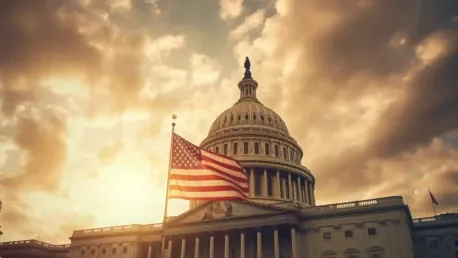The recent U.S. Supreme Court decision in Loper Bright Enterprises v. Raimondo has sent shockwaves through the legal and political landscape of the United States. By overturning the long-standing Chevron deference, the Court has fundamentally altered the balance of power between federal agencies and the judiciary. This landmark ruling has significant implications for the implementation and resistance of federal policies across a wide range of areas, from environmental regulations to civil rights.
The End of Chevron Deference
Historical Context of Chevron Deference
Chevron deference, established in a 1984 Supreme Court ruling, granted federal agencies broad discretion to interpret ambiguous congressional statutes. This judicial principle allowed agencies to enact detailed regulations independently, shaping the regulatory framework of the United States. Over the years, Chevron deference was cited in more than 18,000 federal court decisions, underscoring its pivotal role in administrative law. This principle ensured that federal agencies, leveraging their specialized expertise, could define and implement key aspects of statutory programs, optimizing policy execution without excessive interference from the judiciary.
Moreover, Chevron deference created a predictable environment where federal agencies could navigate complex regulatory landscapes with a clear understanding of their interpretive limits. Prior to this ruling, regulatory decisions were often subject to varying judicial interpretations, leading to inconsistencies and legal uncertainties. However, the deference doctrine established a benchmark, urging courts to defer to agency expertise as long as the regulations were reasonable and aligned with legislative intent. This helped mitigate the seemingly endless courtroom battles over regulatory interpretations, fostering smoother policy implementations.
The Loper Bright Case
The Supreme Court’s ruling in Loper Bright Enterprises v. Raimondo marked a significant departure from the Chevron doctrine. The case involved New Jersey herring fishermen who challenged a 2020 federal rule requiring them to pay for third-party observers on their boats. The fishermen argued that the rule was financially burdensome and lacked legal justification. The Court’s decision to side with the fishermen effectively dismantled Chevron deference, emphasizing that courts should exercise their independent judgment on federal regulations. This ruling underscores the Court’s growing inclination towards a more scrutinized review of agency actions, shifting the balance of interpretive power back to the judiciary.
Additionally, this case reflects the Court’s willingness to prioritize economic consequences on affected parties, such as the fishermen, over administrative mandates. The contested regulation was perceived not only as legally unsupported but also as an undue economic burden. With the Supreme Court siding with the fishermen, the decision highlights a broader judicial philosophy that emphasizes rigorous statutory interpretation and protection of economic interests against expansive regulatory interpretations. This landmark decision, therefore, introduces a new era where federal agencies must thoroughly justify their regulations, anticipating intensified legal challenges.
Implications for State-Federal Relations
Empowering States to Challenge Federal Policies
The overturning of Chevron deference is seen as a double-edged sword, affecting both conservative and liberal state agendas. For blue states, the ruling provides a new lever to more effectively contest policies introduced by a conservative federal administration. This is particularly relevant in areas such as immigration, climate change, and civil rights, where states may seek to block federal initiatives that conflict with their own policy goals. The newfound judicial oversight allows states to challenge federal regulations on more solid legal grounds, potentially curtailing federal overreach and preserving state-specific regulatory environments.
Conversely, this ruling also serves conservative states looking to contest regulatory expansions by liberal administrations. The enhanced judicial scrutiny accompanying the end of Chevron deference means that states opposing federal policies now have a formidable tool in their legal arsenal. Conservative states which have long contested stringent environmental regulations can leverage this ruling to effectively argue against federal mandates, aiming to uphold their deregulation agendas. Thus, the ruling fosters an environment where partisan states can more assertively defend their policy preferences, utilizing judicial avenues to contest federal actions that misalign with their regulatory perspectives.
Legal Mobilization in Blue States
In response to the ruling, blue states are mobilizing legal resources to prepare for potential policy battles. California, for instance, is allocating funds specifically for legal confrontations, while other states such as Connecticut, Massachusetts, Minnesota, New Jersey, and New York are strategizing court approaches. Democratic governors in Colorado and Illinois are forming coalitions to protect democratic rights and resist federal overreach, highlighting the proactive stance taken by these states. These efforts reflect a strategic alignment among states to fortify their legal defenses and uphold their respective regulatory standards against anticipated federal interventions.
Additionally, the ruling has galvanized bipartisan alliances and collaborations at multiple governmental levels. By forging legal frameworks and pooling resources, states aim to create robust legal defenses capable of navigating complex judicial scrutiny. Such initiatives not only echo their commitment to protecting state-specific policies but also illustrate a dynamic interplay of legal strategies shaped by shifting power dynamics. Consequently, the legal mobilization underscores a broader governance trend where states, irrespective of political leanings, recognize the judiciary as a critical battleground for regulatory contestations, preparing meticulously for potential federal confrontations.
Challenges for Federal Agencies
Increased Judicial Scrutiny
The Supreme Court’s decision to overturn Chevron deference means that federal agencies will now face increased judicial scrutiny when implementing new regulations. This heightened oversight complicates the process of enacting detailed regulations, as agencies can no longer rely on broad interpretive authority. Instead, they must ensure that their regulations withstand rigorous judicial review, which may slow down the implementation of new policies. Federal agencies will need to provide comprehensive justifications for their regulatory decisions, demonstrating clear statutory alignment and minimizing ambiguity to survive the intensified judicial examinations.
Moreover, the increased judicial scrutiny introduces a significant burden of proof on federal agencies. The agencies must now anticipate potential legal challenges and rigorously document their regulatory rationale, defending their interpretations against varying judicial perspectives. The lack of Chevron deference necessitates a more meticulous and evidence-based approach to rule-making, emphasizing empirical support and precise statutory interpretations. This procedural adaptation may slow down regulatory processes, but it ensures that regulations are resilient and legally sound, capable of enduring thorough judicial evaluations.
Impact on Regulatory Rollbacks
The ruling also complicates efforts by a Republican administration to implement substantial deregulation without robust congressional support. By requiring courts to exercise their independent judgment, the decision makes it more challenging for conservative administrations to dismantle existing regulations. This increased scrutiny hinders progressive deregulation efforts, potentially leading to regulatory gridlock. Conservative administrations, aiming to reduce regulatory burdens, now face an additional judicial barrier, necessitating comprehensive legal justifications and demonstrating clear statutory grounding in their deregulatory endeavors.
This intensified judicial oversight implies a longer and more arduous path to achieve significant deregulatory reforms. Federal agencies must navigate a complex legal environment, balancing policy goals with stringent judicial standards. The ruling necessitates a judicious and well-documented approach to deregulation, potentially elongating timelines and introducing delays in policy implementation. Therefore, the impact on regulatory rollbacks reflects a broader shift towards a more scrutinized and legally thorough administrative process, emphasizing statutory precision and judicial compatibility in regulatory actions.
Broader Legal and Policy Implications
Protracted Legal Battles
The overturning of Chevron deference is expected to lead to numerous and extensive legal battles over new federal policies. Both conservative and liberal states are likely to challenge federal regulations more frequently, resulting in a contentious and protracted policy-making process. This increased legal activity underscores the dynamic and polarized nature of American governance. The judiciary will become a prominent arena for regulatory disputes, with courts assuming a central role in shaping the policy landscape through intensified scrutiny and detailed adjudication.
Additionally, the protracted legal battles signify a broader institutional friction between the executive branch and the judiciary. Federal agencies, under heightened scrutiny, must navigate a complex legal terrain where judicial interpretations and statutory mandates intersect. The ruling fosters an environment where legal contestations become more frequent and intricate, potentially delaying policy enactments. Hence, the protracted legal battles reflect evolving governance dynamics, characterized by rigorous judicial evaluations and heightened legal challenges influencing the regulatory framework.
Regulatory Gridlock
The heightened judicial scrutiny over federal regulations may result in regulatory gridlock, where both the implementation of new regulations and the dismantling of existing ones are delayed. Federal agencies, irrespective of the ruling administration, may struggle to navigate the complex legal landscape, leading to prolonged courtroom battles. This gridlock can stymie swift regulatory actions, ultimately hampering the effective governance and policy evolution in diverse sectors. Agencies must anticipate and prepare for substantial legal challenges, potentially curbing the pace and efficacy of the regulatory process.
Consequently, this regulatory gridlock signifies a pivotal challenge for federal governance, underscoring the intricate dynamics between regulatory action and judicial review. The ruling mandates a strategic recalibration of regulatory processes, emphasizing legal soundness and statutory precision. Federal agencies must judiciously balance policy objectives with anticipatory legal strategies, ensuring that regulations are resilient against judicial scrutiny. This intricate process highlights the evolving complexities of governance in the United States, where regulatory actions are continuously shaped by judicial interpretations and statutory mandates.
The Future of Federal Regulatory Authority
Shifting Power Dynamics
The Supreme Court’s decision reflects a profound shift in the balance of power between federal agencies and the judiciary. By dismantling Chevron deference, the Court has redistributed interpretive authority, granting courts greater oversight of federal regulations. This shift has significant implications for the future of federal regulatory authority, as agencies must now navigate a more complex and scrutinized legal environment. The decision underscores a transformative governance shift, emphasizing judicial primacy in interpreting statutory mandates and evaluating regulatory actions.
Furthermore, this ruling heralds a new era where judicial interpretations significantly influence regulatory frameworks. The judiciary, empowered with enhanced oversight, will play a pivotal role in shaping policy enactments through rigorous evaluations and deliberations. This shift necessitates a strategic recalibration among federal agencies, emphasizing meticulous statutory alignment and legal resilience in policy formations. The evolving power dynamics reflect a broader trend towards increased judicial involvement in governance, shaping the regulatory landscape through detailed adjudications and statutory interpretations.
Preparing for Legal Confrontations
The recent U.S. Supreme Court decision in the case of Loper Bright Enterprises v. Raimondo has caused significant reverberations in both the legal and political spheres of the United States. By reversing the long-standing Chevron deference, the Court has fundamentally shifted the balance of power between federal agencies and the judiciary. This landmark decision essentially reduces the authority that federal agencies have long enjoyed, granting more power to the courts in interpreting laws. Consequently, this could have a sweeping impact on the enforcement and resistance to federal policies in various fields, including environmental regulations, healthcare, immigration, and civil rights. The implications are far-reaching, potentially altering how policies are implemented and challenged. This change introduces a new dynamic in the interpretation of federal laws and could lead to increased litigation and uncertainty. As agencies may now have less leeway to interpret statutes, the ruling forces legislative and executive actions into new realms of accountability and judicial scrutiny. This monumental ruling will undoubtedly shape the American legal landscape for years to come.









